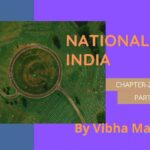Checkout handpicked notes of NCERT class 9th History Chapter 2 Socialism in Europe and the Russian Revolution notes by Vibha Madam and don’t forget to share your valuable comments in the comment below to motivate our author.
Socialism in Europe and the Russian Revolution Notes
The age of Social change
The French Revolution opened up the possibility of creating a dramatic change in the way in which society was structured.
Not everyone in Europe, however, wanted a complete transformation in society. Some accepted changes in the society radically whereas some were against the revolutionary changes.
Liberals, Radicals and Conservatives
Liberals
It was a group of thinkers, scholars and philosophers , who wanted to change society. Though they were not democrats, they argued for a representative, elected, parliamentary government, subject to law interpreted by a well-trained independent judiciary. liberals wanted a nation which tolerated all religions.
Radicals
Radicals wanted the nation in which the government was based on the majority. Many radicals supported the women’s suffrage movement.
Conservatives
Conservatives were opposed to radicals and liberals. earlier in the 18th century, conservatives had been generally opposed to the idea of change. By the 19th century some change was inevitable but believed that the past had to be respected and change had to be brought about through a slow process.
Industrial society and social change
- It was a time of profound social and economic changes.
- It was a time when new cities developed, railways expanded and the industrial revolution occurred.
- Industrialisation brought men, women and children to factories.
- Liberals and radicals themselves were often property owners and employers. They firmly believed in the value of individual effort, labour and enterprise.
- Some nationalist, liberals, and radicals wanted the Revolution to put an end to the kind of government established in Europe in 1815.
- Nationalist talked of revolutions that would create ‘nations’ where all citizens should have equal rights.
The coming of Socialism to Europe
Socialism
It is an economic system under which the means of production are controlled by the society .the socialist were against the private property, and saw it as the root of all social ills.
By the mid 19th century in Europe, socialism was a well-known body of ideas that attracted widespread attention.
Different visions of Socialism
- Some believed the idea of cooperatives.
- Robert Owen (1771 -1858) a leading English manufacturer, sought to build a cooperative community called New Harmony in Indiana (USA). •Other socialists demanded the government encourage cooperatives.
- In France, Louis blanc (1813 -1882) wanted the government to increase cooperatives and replace capitalist enterprises.
- Karl Marx (1818-1883) and Friederich Engels (1820-1895) added other ideas to this body of argument.
- Karl Max argued that industrial society was ‘capitalist’.
- Capitalists owned the capital invested in factories, and the profit of capitalists was produced by workers.
- Workers had to overthrow capitalism and the rule of private property
- Marx believed that all property was socially controlled. this would be a communist society.
Support for Socialism
- By the 1870s, socialist ideas spread through Europe.
- Socialists formed an international body- ‘The Second International’ to coordinate various activities of the socialist at international level.
- In Germany, workers associations worked closely with the Social Democratic Party’ (SPD) and helped it win parliamentary seats.
- By 1905, socialist and trade unions formed the ‘Labour Party’ in Britain and a ‘Socialist Party’ in France.
- However, till 1914, socialists never succeeded in forming a government in Europe.
The Russian Revolution
The fall of the monarchy in February 1917 and the events of October are normally called the Russian Revolution.
The Russian Empire
In 1914, Tsar Nicholas ll ruled Russia and its empire. The majority religion was Russian orthodox Christianity but the Empire also included Catholics ,Protestants, Muslims and Buddhists.
Economy and Society
- The vast majority of Russia’s people were agriculturists.
- Russia was a major exporter of grain
- St. Petersburg and Moscow were the most prominent industrial areas in Russia.
- Many factories were set up in the 1890s, when Russia’s railway network was extended.
- Foreign investment in industry increased.
- Coal, iron and steel production doubled.
- Most industry was the private property of Industrialists.
- Workers were divided in social groups by their skills. Metalworkers considered themselves aristocrats among the other workers.
- Despite divisions, workers did unite to strike work when they disagreed with employers
- In the countryside peasants cultivated most of the land.
- Like workers, peasants were also divided.
- They were deeply religious and they had no respect for the nobility.
- In Russia, peasants wanted the land of the nobles to be given to them.
- Nobles were not popular with the locals. frequently, they refused to pay rent and even murdered landlords.
- Russian Peasants pooled their land together periodically.
Socialism in Russia
- “The Russian social democratic workers party” was founded in 1898 by socialists who respected Marx’s ideas.
- Some Russian socialist believed that Peasants would be the main force of the revolution. They formed “the socialist revolutionary party” in 1900. This party struggled for peasants’ rights and demanded that land belonging to nobles be transferred to peasants .
- Lenin felt that peasants could not be united in one group because of their differentiation as some were rich ( capitalist) and some were poor (workers) .they could not be part of a socialist movement .
- Lenin (leader of Bolshevik) thought that the party should be disciplined and control the number and quality of its members. others (Menshevik) thought that the party should be open to all.
- Mansheviks was a breakaway group of Bolsheviks. It was led by Alexander Kerensky.
A Turbulent time : The 1905 Revolution
- Russia was an autocracy. The Tsar was not subject to parliament . The Social Democratic and Socialist Revolutionary demanded a constitution during the revolution of 1905 .
- the year 1904 was particularly bad for the Russian workers due to high prices and decline in real wages
- four workers were dismissed due to poor economic condition
- When peaceful workers led by father Gapon in the Winter Palace it was attacked by the police and the Cossacks.
- Over 100 workers were killed and about 300 wounded. This incident, known as Bloody Sunday, started a series of events that became known as the 1905 revolution.
Result
Strikes took place all over the country and Universities closed down. Lawyers, doctors engineers and middle- class workers established the union of unions and demanded a constituent assembly.
During the 1905 revolution, the Tsar allowed the creation of an elected consultative parliament or Duma.
The first world war and the Russian Empire
- In 1914, war broke out between two European alliances- Germany, Austria and Turkey (the central power), France, Britain and Russia (Later Italy and Romania).
- Each country had a global Empire and the war was fought outside Europe as well as in Europe. This was the first world war.
Impact of the first world war on Russia
- Russia’s armies lost badly in Germany and Austria between 1914 and 1916.
- Russia lost more than 7 million soldiers by 1917.
- The destruction of crops and buildings lead to over 3 million refugees in Russia.
- The war also had a severe impact on industries’.
- Industrial equipment disintegrated, railway lines breakdown
- Able -bodied men were called up to the war. As a result, there was a labour shortage and small workshops were shut down.
- Large supplies of grain were sent to feed the army, and food became scarce.
Don’t forget to comment in the comment section below to appreciate and motivate our author by sharing this notes with your friends you can also Contact us for any query or if you are interested in writing with us.
Use Canva for amazing images.
Stay tuned for more amazing stories, poems & articles like this.
For sponsor any article or your article you can mail us with your logo ready and details.











Excellent and well explained notes
Hey
Mam plz provide whole ch notes